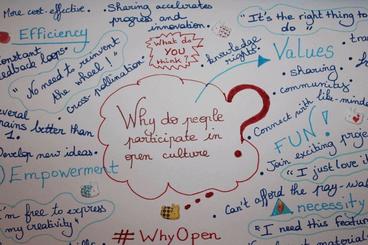
Prewriting Activities and Students' Writing Processes
While teachers of writing often refer to prewriting activities as a part of the writing process, just what counts as productive prewriting activity is cloudy. Does daydreaming or silent reflection count, or are these just procrastination? What about note-taking, outlining, and concept mapping—are they prewriting or just writing? Are reading and research “prewriting” activities, or does this view neglect that research is often recursive? Is all of this stuff necessary, or should students launch into drafting and trust their revision processes?
Broadly speaking, prewriting activities are those tasks associated with a writing activity that help students to understand purposes and goals for writing, to generate ideas or content for a writing task, or to organize information in preparation for writing. While effective prewriting doesn’t guarantee excellent finished products, research in writing illustrates that lack of effective prewriting preparation is predictive of poorer performance with writing tasks. Incorporating prewriting activities creates opportunities for modeling and scaffolding of writing processes, provides early formative feedback to writers, and can help students mitigate procrastination.

Prewriting 1: Decoding the prompt to clarify tasks
For large writing projects or courses that introduce new genres of writing, it can be useful to ask students to spend time reading the assignment sheet and summarizing the important elements of the assignment. A brief writing activity can help to confirm that students understand the writing task. For complex writing tasks, you might ask students to think about the sequence of tasks involved and the amount of time they anticipate each step will take. A classroom activity comparing students’ responses can also help students to test their estimates against their peers’ understanding.
Prewriting 2: Writing topic proposals to establish motivation and develop content
When students are given freedom to select their own project topics, a topic justification is an effective early writing activity. In a brief statement, students identify their intended topic and provide reasons why their choice is an effective match for the assigned task. The topic justification should answer the question “Why is this topic worth investigation or research?”
For a writing task in a public health context, topic justifications mirror the research expectations of an effective study:
In my study of hand washing campaigns in clinical settings, I will review the effectiveness of posting image-heavy, multilingual washing instructions in reducing the transmission of infection. Infection remains a stubborn problem in medical centers, jeopardizing health outcomes and costing millions of dollars in continuing care. Using existing data on infection rates in clinical settings, I will compare infection rates the intervention site to sites that had no previous signage and compare the intervention site rate to locations where monolingual, text instructions were replaced.
In this instance, the student begins to address the problem of infection, the persons under investigation, the intervention and control settings, and outcome measures used to assess effectiveness.
In other contexts, a preliminary literature review can serve as a topic justification. Students can begin their research project by seeking resources that demonstrate that their task or topic is a matter of interest to the field. A brief summary of the state of research in the field can help students to see what is at stake in their research question. Assignments can include the development of annotated bibliographies and reference packets.
Prewriting 3: Outlining and concept mapping to organize knowledge
When student-generated documents have a clearly prescribed format (Intro, Methods, Results, Discussion or Issue, Rule, Application, Conclusion), students can sketch a preliminary outline of the contents of their document and begin to scaffold topic sentences for their finished documents. Instructors who anticipate a prescribed form can break down the functions of each section in terms of the document’s overall purpose and describe what sorts of evidence and source material are required for success.
In more open-ended inquiries, concept maps can help students capture the important aspects of an ill-structured problem or concept, or can experiment with arrangements of knowledge and expose unknown and not yet known information. Open-ended concept maps can also help students to narrow and focus their topics.
Resources
Eberly Center. Using concept maps.
Harris, K.R., Santangelo, T. and Graham, S. (2010). Metacognition and strategies instruction in Waters and Schneider, Metacognition, Strategy Use, and Instruction.
University of Kansas. Prewriting Strategies.
Further Support
See the Teaching with Writing pages on the Center for Writing website for additional resources. As many of you know, our WAC program also hosts the popular Teaching with Writing event series.
- Log in to post comments